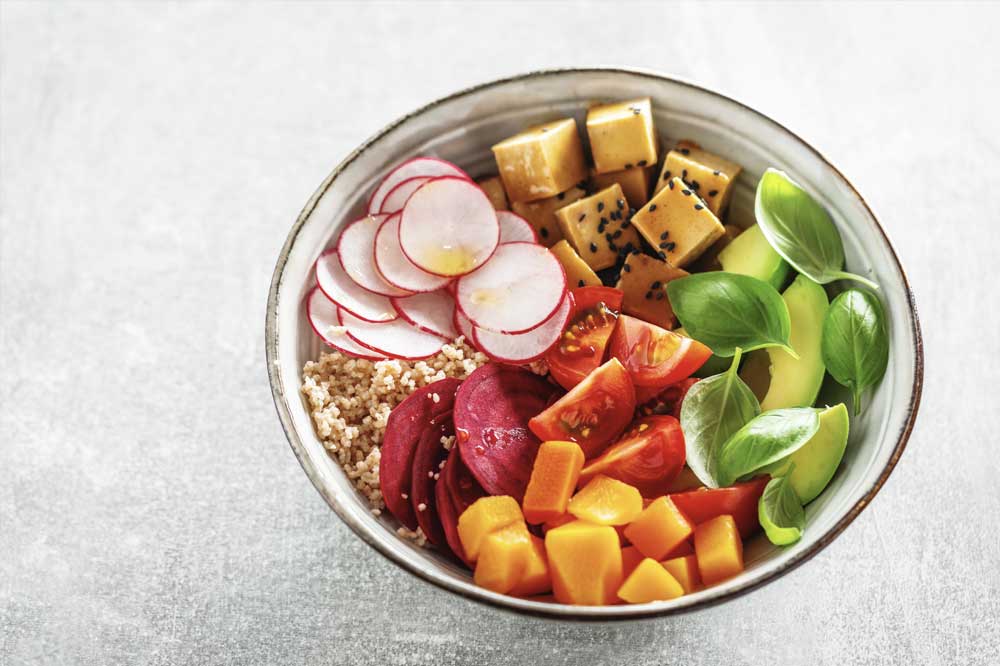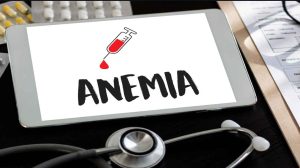Eating healthy food is important, and you know it because you read our articles. But are you really eating healthy food diet, or all kinds of exciting recommendations on the covers like “gluten-free!” And “rich in fiber!” Make you buy crap?
Carob chocolate umbrellas contain far too little carob, and far too much sugar. Switch to home use of carob powder instead.
Cereal snacks are not bad relative to a snack, but they have a lot of processed ingredients. Gluten-free snacks are also not really healthy food – they are full of fat.
Do you eat soy “cheese” spreads? Note that they have the same amount of salt as in cheeses, and much less protein. They are not recommended employees.
Did you come back from the store with a pile of overpriced foods , including new products that are supposed to make you super healthy food? Nice intention, but based on what did you choose – the seller? The colorful cover?
We are not disparaging, but how to say it – you may very well be eating some things that will convince you that they are great for you, when in reality they will do you more harm than good.
Check yourself: if you eat one of the four foods on our list, you probably still have a lot to learn about healthy food eating. But don’t worry: our nutritionist also has better substitutes for each of them.
1. The cliché of the decade for healthy food: carob chocolate umbrellas
The temptation
is they are always placed near the cash registers and make eyes at children and parents who are trying to feed their children with “good” snacks. It’s not chocolate , it’s just carob powder – so it’s fine.
Carob powder is indeed very healthy food. If you use it instead of cocoa for chocolate and desserts you will really give the children something better, mainly because you will save them theobromine (caffeine’s cousin) and also oxalic acid which interferes with the absorption of calcium and iron.
The bitter truth
, the problem is that these chocolate umbrellas are a gross joke at the expense of the consumer. Mainly because the amount of carob in them is minimal and on the other hand, the amount of sugar is huge and also the amount of saturated fat.
how do i know Because I read the list of ingredients, the one written on the back, in a small font. The components are always listed so that the first component is in the largest amount and the last in the smallest amount.
So please accept, from the largest quantity to the smallest: sugar, vegetable oil, milk powder, cocoa butter, carob powder (10%), emulsifiers (soy lecithin), vanillin, salt. Interestingly, they are called carob umbrellas, but actually the amount of carobs is very small. The product has much more sugar and fat, most of which, by the way, is saturated.
Compared to standard milk chocolate, the amounts of sugar, fat and of course the calories are very similar. The main difference is that instead of cocoa there are carobs – but since these are tiny amounts, the difference is null in sixty. You can keep buying the umbrellas – but don’t think they are any healthier.
The solution
Do you want to use carob powder? Excellent. In almost any recipe that contains cocoa, carob powder will be a good substitute. You don’t have to replace the entire amount, even if you use a ratio of half cocoa and half carobs it will be excellent.

2. Cereal snacks healthy food?
The temptation
out of the breakfast cereal market, which has quite a bit of eye catching, the cereal snacks for children have grown. Cereals have a healthy diet connotation. The snacks are the cousins of the breakfast cereals and they are also branded as healthy food.
The actual converted truth
in many cases is more beautiful than software. Take for example a cereal snack with chocolate crackers. It says that it is rich in fiber, which contains calcium in an amount equivalent to a glass of milk – which is really true. The big question is, does it really become healthy food? Thanks to the fiber and calcium?
I decided to dig a little into the nutritional values of the snack (and you are very welcome to do this yourself) and I saw that a small snack is equivalent to a slice of bread in terms of the amount of carbohydrates in it: about 16 grams per unit.
Thanks to the calcium added to the mixture, these values are good: about 200 mg per unit, and the amounts of fat and protein are low. For a snack, these are really good values.
The smile dropped when I went to read the list of ingredients and saw that it was a highly processed product.
The list of ingredients in energy bars usually contains at least 20 different food ingredients – starting from various processed flours (corn flour, rice, wheat), chocolates or dried fruits or coconut or all together, dietary fiber, sugar, maltodextrin (did you know it’s actually a type of sugar?)
And also vegetable oil, calcium, humectants, skimmed milk powder, honey (also a type of sugar), salt, emulsifiers, water, flavoring agents, swelling agent, vitamin and mineral mixture. All in one snack – does that seem reasonable to you?
Why should a child, and also an adult, eat so many processed ingredients? So many substances that are supposed to affect the texture, texture and shelf life of the product? Is the addition of vitamins and minerals supposed to make up for all of these? Well – she didn’t.
It just throws sand in your eyes, makes you feel like oh well, there are also some vitamins in it. Because although the amount of carbohydrates in the snack is good, their quality is low – these are mainly simple flours and various sugars – the kind that will quickly raise your sugar levels, meaning that the glycemic value of such a snack is very high.
The solution
Want something sweet with fiber and vitamins? Take a juicy Majhol date , put a walnut or cashew in the middle. Delicious, easy to prepare and healthy food. It doesn’t come in plastic wrap, true, but it’s actually good. Here is an opportunity to refine for the children what the teacher said about the quality of the environment.
3. The vegan spin: soy “cheeses” healthy food?
The temptation The vegan
food market is bustling and developing. There have also been many products that claim to provide a healthy food and balanced substitute, but in practice – not so. For example “vegan cheeses”.
Many vegans use soy to supplement the proteins they need. Soybeans belong to the legume family and really contain good amounts of protein. We would expect to find a lot of proteins in “soy cheeses”.
The bitter truth
in practice, these “cheeses” contain mainly oils (sometimes soybean oil) and also starches or processed sugars. The amount of protein is low to zero and does not come close to the amount of protein found in cheeses of dairy origin. It could be funny, if it wasn’t so annoying.
why is it happening? Because this is a product whose main purpose is to be a substitute, to provide a functional solution – a ready-made spread, tasty and convenient to use. But in terms of nutritional composition, the differences are big.
Back to the soy cheese we tested – it also has some soy protein and tofu, but little. One tablespoon of soy cheese has half a gram of protein, one tablespoon of standard cheese has 2 grams of protein, which is a significant difference.
There is a similarity between the spreads precisely where we would like them to differ: in the high amounts of sodium. Most cheeses of dairy origin contain a lot of salt (350-450 mg per 100 g of product). Even the vegan spreads will often contain such large amounts. This is of course a great shame.
This is an industrial product with a very low nutritional value that takes advantage of the concept that vegan is healthy food- a concept that is fundamentally true, but not when it comes to processed food.
There is no doubt that the market for animal food substitutes still has a lot of room to grow. Some manufacturers call this product soy spread, or vegan spread – names that are much more accurate in my opinion.
The solution
Do you want to spread something proteinaceous on the bread that is not from the animal? Please, take slices of tofu or seitan and spread some pesto or olive spread underneath, add a fresh vegetable and you have a satisfying and delicious sandwich.
4. Gluten-free potato chip snack healthy food?
The temptation
gluten-free foods have become very popular. Gluten-free has become code for health, although sometimes the product itself, however gluten-free, is not really healthy food, maybe even the opposite.
There are people who really cannot eat gluten such as celiac patients , and there are those with a low tolerance to it. In both cases, the little bit of eating foods that contain gluten is indeed important and helpful. For celiac patients it is an existential necessity, those with low tolerance can usually be exposed a little – that is, eat a little of things that contain wheat flour, etc.
What’s wrong with having a variety of gluten-free options? There’s nothing wrong with that, on the contrary, I’m in favor of an abundance of healthy food gluten-free products at reasonable prices.
The bitter truth
is that labeling a product as gluten-free is sometimes seen as a seal of quality for the entire product, even when it is actually full of oil, salt and sugar.
Take for example sweet potato chips with maple. On the wrapper is a grocery list that indicates the quality of the ingredients: real maple, brown sugar, selected sweet potatoes and more. It also says that it is suitable for those sensitive to gluten, rich in fiber, contains vitamin A and does not contain preservatives (because who needs a preservative with all the salt in this snack). That sounds awfully healthy food.
so no. There is really no gluten in the snack, but in half a bag (70 grams) there are 42 grams of carbohydrates (almost 3 slices of bread), 21 grams of fat, 340 calories and 270 mg of salt. In this case, a snack remains a snack – I won’t tell you to stop eating From it you will only realize that it is unhealthy food, like any other standard snack. Is
the solution
disturbing? Upsetting? I prefer to see this information as an eye opener and to remind you that if you read the food wrappers it will be much easier for you to recognize when misleading messages are being sent to you.
And you will be able to choose with real understanding What about the product that is being sold to you is completely in your hands (actually your eyes).












Add Comment